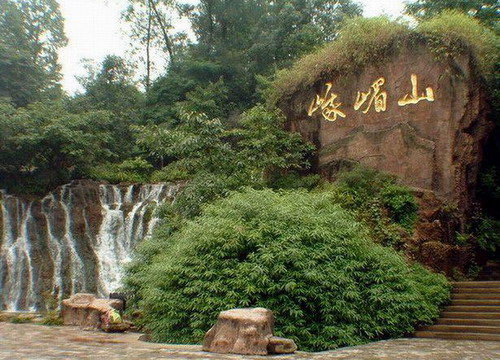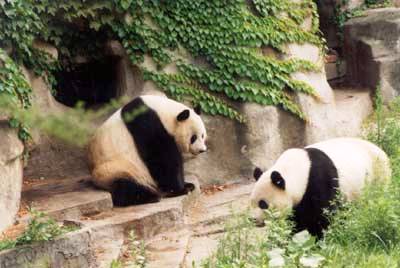Mount Emei

Overview
Mount Emei is the highest of China's four holy Buddhist mountains, rising 3,099m above sea level about 170km from Chengdu, Buddhists beliveve the mountain is home to Samantabbadra-patron of the Lotus Sutra and Bodhisattva of Pervading Goodness.
Know more
Geological processes going back over hundreds of millions of years have created the unique topography of Mt. Emei, and cultivated its rich plant and wildlife. Over 3,000 species of wild plant grow on the mountain, including the Chinese dove tree, which has already become extinct in other parts of the
 world. The flower of the Chinese dove tree takes the shape of a pigeon, and when in full bloom, gives the impression of a flock of pigeons flying in and around the tree. The lesser panda and the gnu are just two of the rare animal species that live on the mountain.
world. The flower of the Chinese dove tree takes the shape of a pigeon, and when in full bloom, gives the impression of a flock of pigeons flying in and around the tree. The lesser panda and the gnu are just two of the rare animal species that live on the mountain.
Mt. Emei is a sacred Buddhist site, and has a Buddhist history of over 1,500 years. It is said that during the 15th century, there were as many as 1,000 monks living on Mt. Emei. According to the records inscribed on a number of stone tablets, an eminent Indian monk came to spread the Buddhist doctrine as early as the 4th century. Later, Emperor Mingdi of the Eastern Han Dynasty ordered that Puguang Hall on the mountain be expanded into a temple, setting a precedent for the imperial court to construct temples on Mt. Emei. From that time onwards, emperors of succeeding dynasties all endowed celebrated temples and eminent monks on the mountain with their gifts. Today, it still houses numerous relics of poems, couplets (written on scrolls and hung on the pillars of a hall), and inscriptions bestowed by emperors and scholars of ancient times.
Must see
Samantbhadra
Samantbhadra, God of Universal Benevolence and disciple of Sakyamuni, was said to have lectured here. Most of the temples on Mount Emei have a statue of Samantbhadra at the shrine. There were once more than a hundred temples and monasteries on the mountain, but only about twenty remain today, including the following better-known ones: Devotion to the Country Temple (Baoguosi), Ten-Thousand-Year Temple (Wanniansi), and Immortal Peak Temple (Xianfengsi), and the temple at Elephant Bath Pond (Xixiangchi)
Golden peak
The summit of Mount Emei commands a grand view of rolling mountain  peaks, sometimes visible, sometimes emerging from the clouds like small islands in an enormous ocean. This is the famous "sea of clouds" view of mount Emei. Walking downhill from the summit for about three hours, you will come across Elephant Bath Pond. According to the old legend, Samantbhadra, Sakyamuni's disciple, once bathed his elephant in this pool before continuing his ascent of Mount Emei or, as others say, before flying to heaven on the elephant's back. Monkeys live in the vicinity; they often approach visitors to beg for food.
peaks, sometimes visible, sometimes emerging from the clouds like small islands in an enormous ocean. This is the famous "sea of clouds" view of mount Emei. Walking downhill from the summit for about three hours, you will come across Elephant Bath Pond. According to the old legend, Samantbhadra, Sakyamuni's disciple, once bathed his elephant in this pool before continuing his ascent of Mount Emei or, as others say, before flying to heaven on the elephant's back. Monkeys live in the vicinity; they often approach visitors to beg for food.
Immortal Peak Temple
Immortal Peak Temple was built 1,700 meters above sea level on the slope of Mount Emei. Next to the temple is a big cave where, as the legend goes, the Yellow Emperor who was visiting the place met a white-haired old man who had a young face. The emperor asked him if he had any company, and the old man replied, yes, there are eight others in the cave. Since then, the cave has been called the Nine Elders Cave (Jiulaodong).
Five kilometers downhill from Immortal Peak Temple, there stands the Clear Sound Pavilion (Qingyinge), another well-known scenic site on Mount Emei. Below Clear Sound Pavilion, there are Double Flying Pavilion (Shuangfeige) and Double Flying bridge (Shuangfeiqiao). The nearby White Dragon Cave (Bailongdong) is said to have been the place where Lady Bai Suzhen, a legendary nymph who was originally a white snake but later became a beautiful girl, cultivated her magic skills.






